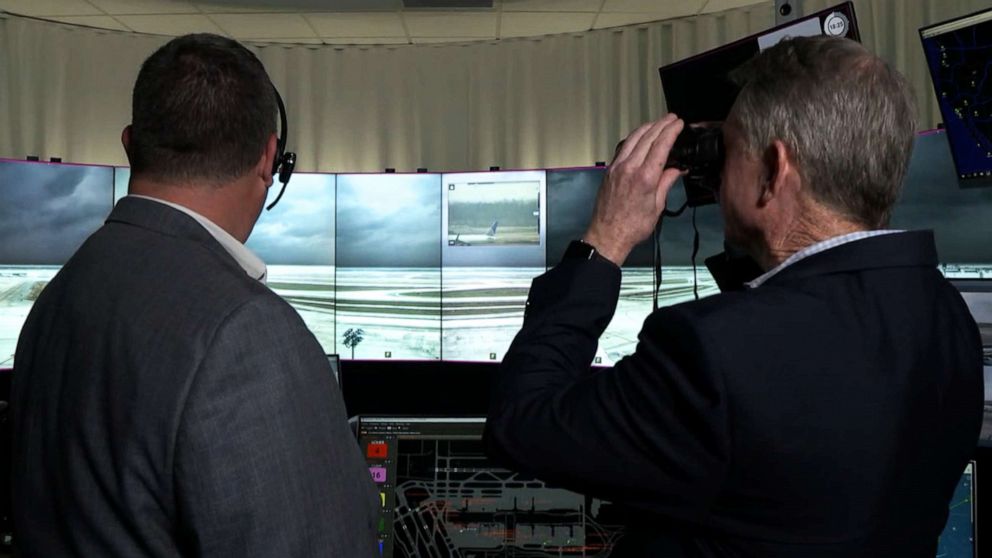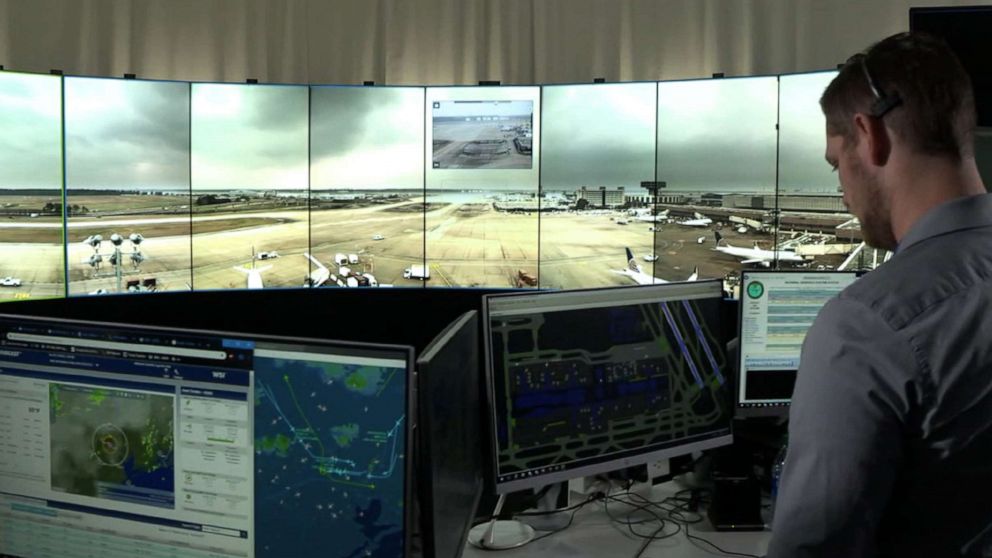Airlines are trading watch towers for virtual screens to control taxiway traffic
United Airlines is the first U.S. commercial airline to use this new technology.
Think your big screen TV is high definition? Try taking a look at virtual ramp control rooms filled with screens that will give air traffic controllers a clear and pristine view of the airfield.
Passengers are typically familiar with seeing towering air traffic control towers when flying into an airport, but ramp control towers are often nestled in between.
Those ramp control towers could soon be traded for virtual towers where operators in a screen-filled airport room a distance away from the tarmac will be able to direct taxiway traffic.
It’s already happening at the George Bush Intercontinental Airport in Houston, Texas, where United Airlines has launched its own virtual ramp control tower to quickly move passengers aboard their planes to and from the taxiway.
"We can look at the screens with binoculars," said Daniel Reed, a United Airlines Houston tower manager. "The resolution is such that it's just like you're looking out the window."

But there are very real challenges and risks to operating in a windowless room, which United believes they are ultimately prepared for.
"We have gone through some really substantial testing and we had several different opportunities during that testing when the engineers were here and had a couple of scary moments where they thought, oh, my gosh, something's wrong," said Susan Pfingstler, managing director of network operations air traffic control strategy at United Airlines, adding "So we really have done a lot of comparison to real life versus the virtual system."
The virtual towers could also make a lot of sense for smaller airports across the country which often don’t have the space to create new multi-million dollar towers.

United Airlines is the first U.S. commercial airline to add this new technology to its digital arsenal and is considering spreading the technology to other airports.
United officials said they believe this technology will speed up the landing and takeoff process for passengers.
"Any time that we can shave off any little bit of efficiency that we can squeeze out of the operation by enabling the controllers to orchestrate a much more elegant ballet of flowing aircraft in and out of the apron area is it's money and it's a benefit to our passengers," Pfingstler said.
ABC News' Mina Kaji, Pat O'Gara, Christine Theodorou, and Gina Sunseri contributed to this report.




